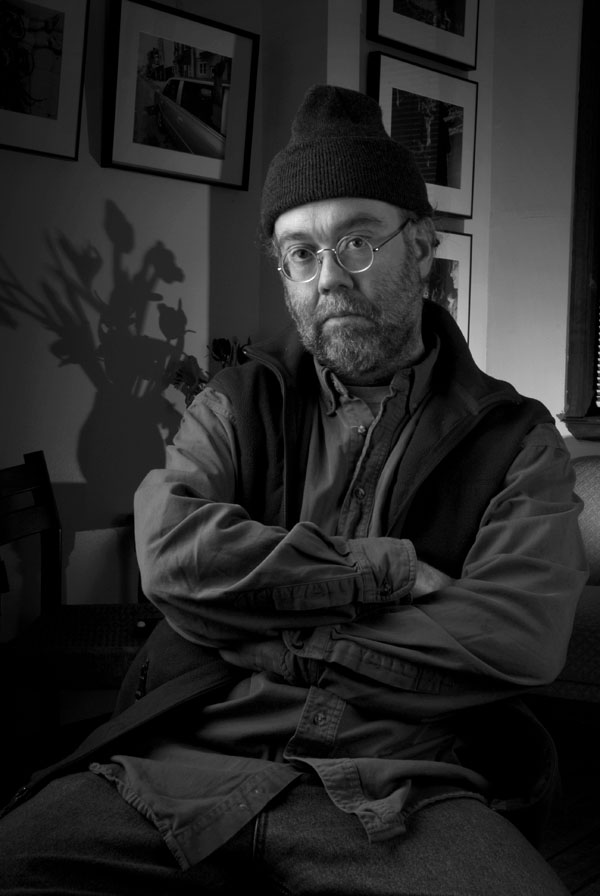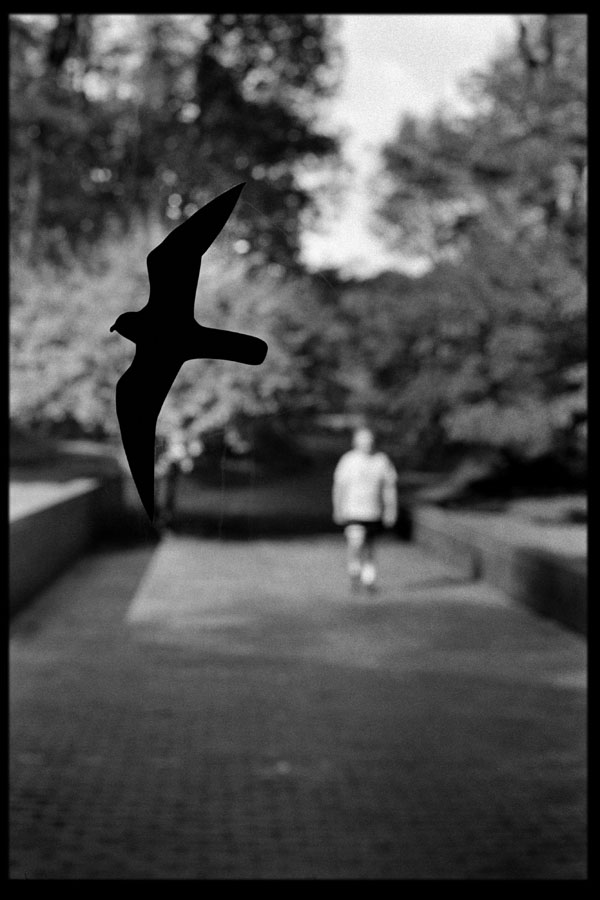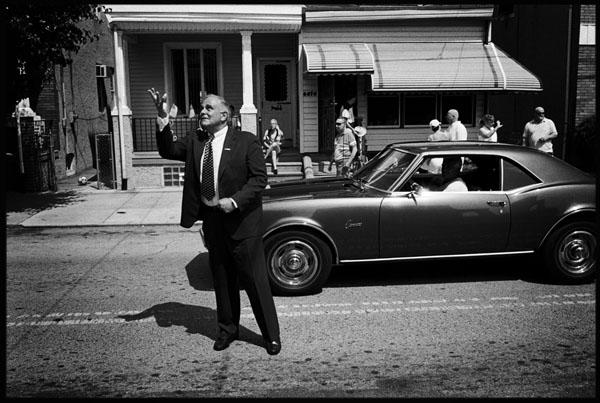
PHAWKER: Let’s start with some basic bio info: where are you from, where did you go to school, how did you wind up in Philly, and what was the aha moment that made you want to become a photographer?
E.C. ADAMS: I was born in Louisville, Kentucky. My parents died (at different times) when I was a small child; I then moved in with relatives in Lancaster, PA. I attended a small private school in Lancaster. After that, several “prodigal son” episodes were intermingled with stints at a few different universities, the last being Temple, where I was a French major. But the main reason I moved to Philly was because I’d gotten a job as a black-and-white darkroom printer in 1988.
There was no real “aha” moment. When I was about 20 years old, a roommate of mine had a small darkroom, and he also sold me an old Nikon F; he showed me how to use both of them, probably in a couple of hours. Apart from that, I have no “formal” training in photography.
PHAWKER: How would you describe your visual style? What photographers — or for that matter any other visual artists — had a deep impact on your  aesthetic?
aesthetic?
E.C. ADAMS: Some people have said my work looks a little bit like Robert Frank — but mine is more mood-driven and autobiographical/personal rather than documentary, particularly in the last few years. And some of my pictures are flat-out meaningless art photography, albeit taken in real-life situations — for example, one hobby of mine is finding “as-is” still lifes in situ. I guess the photographer who influenced me the most was Larry Clark, who inspired me because he made a career of taking pictures about his life and of his drug-addled friends, rather than specifically going out on a photographic mission — for the most part, anyway.
PHAWKER: Let’s talk about gear. What do you shoot with? Are you entirely digital now?
E.C. ADAMS: I shoot mostly with Leica and Nikon 35mm film cameras. I feel more connected to their primitive analog functionality, and also feel reassured by the tried-and-true archival durability of B&W film — as in, “Do you know where your JPEGS will be 50 years from now?” I also like film because you often don’t see your results for days or weeks after you’ve shot the photographs, thereby psychologically distancing yourself from the subject matter. On a practical level, I’ve also re-discovered shots I took when I was much younger that I didn’t appreciate at the time; had I been shooting digital back then, those images would have undoubtedly been deleted. That said, I also have several digital cameras, which of course are necessary for any kind of paid work, as well as any other project where instant results or large quantities of material are needed. Plus they’re fun to use sometimes, and the little digicams are convenient.
PHAWKER: Please explain the circumstances behind the Ed Rendell photo that first brought you to our attention. He looks like a man off his meds in that pic.
E.C. ADAMS: I took that picture at the Memorial Day parade in Mayfair a few years ago. Ed was marching in the parade, I think alongside the vintage Corvette brigade. To be perfectly honest, I don’t even remember taking that specific picture, and I have NO idea why his hands are in the air (as if he’s paying tribute to Helios, God of the Sun). As to whether or not he’s off his meds, well, you’ll have to ask his physician.

PHAWKER: We noticed Mark Ibold‘s name mentioned in our CV, please elaborate.
E.C. ADAMS: It’s funny that I still have that music stuff on my resume! I was trying to pad it out some years ago, I guess before I’d, well, padded out the photography part. Anyway, I grew up with Ibold (Pavement, Sonic Youth) in Lancaster; I’ve known him since 4th grade. We had a short-lived so-called “band” in Lancaster in 1982 called The Adonis Brothers (if you fish around the “Music and Noise” section of my website you’ll find some MP3’s of music I did myself or was involved in with other people). That was probably the first recording of him playing bass — one note over-and-over again — and/or vocalizing. But in reality, it was merely an excuse for underage drunkenness and noise-making. Tim Finefrock — another Lancaster dude, later of East Village country/metal band Raging Slab — was the drummer.
PHAWKER: Your blog/website is called ‘heudnsk,‘ please explain?
E.C. ADAMS: It’s a pathetic and heartbreaking story, and I regret calling it that (rather than tedadams.net or something otherwise spellable/pronounceable). Basically, many years ago when I was about 19 or 20, some science dweeb pals of mine had a ridiculous game called “Quick! Make Up a Word!” and the theme of the day was something like “11th Century Danish Words.” I blurted out “Heudnsk!” Anyway, over the years, I made a few home movies and some 12″ records under the monikers “Heudnsk Productions” or “Heudnsk Records.” So when I first started my website a number of years ago, it was intended to be an outlet for my various hobbies (including painting and music), not a showcase dedicated to my highfallutin’ photography — which it now basically is. So that’s the story behind Heudnsk, the unfortunate cross I have to bear.
PHAWKER: Have you ever shot a man in Reno just to watch him die?
E.C. ADAMS: Well not JUST to watch him die…

